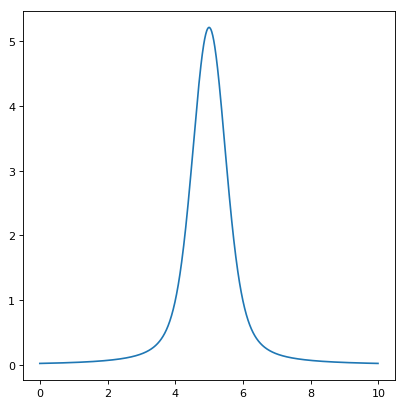Voigt1D¶
-
class
astropy.modeling.functional_models.Voigt1D(x_0=0, amplitude_L=1, fwhm_L=0.6366197723675814, fwhm_G=0.6931471805599453, **kwargs)[source] [edit on github]¶ Bases:
astropy.modeling.Fittable1DModelOne dimensional model for the Voigt profile.
Parameters: - x_0 : float
Position of the peak
- amplitude_L : float
The Lorentzian amplitude
- fwhm_L : float
The Lorentzian full width at half maximum
- fwhm_G : float
The Gaussian full width at half maximum
Other Parameters: - fixed : a dict, optional
A dictionary
{parameter_name: boolean}of parameters to not be varied during fitting. True means the parameter is held fixed. Alternatively thefixedproperty of a parameter may be used.- tied : dict, optional
A dictionary
{parameter_name: callable}of parameters which are linked to some other parameter. The dictionary values are callables providing the linking relationship. Alternatively thetiedproperty of a parameter may be used.- bounds : dict, optional
A dictionary
{parameter_name: value}of lower and upper bounds of parameters. Keys are parameter names. Values are a list or a tuple of length 2 giving the desired range for the parameter. Alternatively, theminandmaxproperties of a parameter may be used.- eqcons : list, optional
A list of functions of length
nsuch thateqcons[j](x0,*args) == 0.0in a successfully optimized problem.- ineqcons : list, optional
A list of functions of length
nsuch thatieqcons[j](x0,*args) >= 0.0is a successfully optimized problem.
See also
Notes
Algorithm for the computation taken from McLean, A. B., Mitchell, C. E. J. & Swanston, D. M. Implementation of an efficient analytical approximation to the Voigt function for photoemission lineshape analysis. Journal of Electron Spectroscopy and Related Phenomena 69, 125-132 (1994)
Examples
import numpy as np from astropy.modeling.models import Voigt1D import matplotlib.pyplot as plt plt.figure() x = np.arange(0, 10, 0.01) v1 = Voigt1D(x_0=5, amplitude_L=10, fwhm_L=0.5, fwhm_G=0.9) plt.plot(x, v1(x)) plt.show()
()

Attributes Summary
amplitude_Lfwhm_Gfwhm_Linput_unitsThis property is used to indicate what units or sets of units the evaluate method expects, and returns a dictionary mapping inputs to units (or Noneif any units are accepted).param_namesx_0Methods Summary
evaluate(x, x_0, amplitude_L, fwhm_L, fwhm_G)Evaluate the model on some input variables. fit_deriv(x, x_0, amplitude_L, fwhm_L, fwhm_G)Attributes Documentation
-
amplitude_L¶
-
fwhm_G¶
-
fwhm_L¶
-
input_units¶ This property is used to indicate what units or sets of units the evaluate method expects, and returns a dictionary mapping inputs to units (or
Noneif any units are accepted).Model sub-classes can also use function annotations in evaluate to indicate valid input units, in which case this property should not be overridden since it will return the input units based on the annotations.
-
param_names= ('x_0', 'amplitude_L', 'fwhm_L', 'fwhm_G')¶
-
x_0¶
Methods Documentation
-
classmethod
evaluate(x, x_0, amplitude_L, fwhm_L, fwhm_G)[source] [edit on github]¶ Evaluate the model on some input variables.
-
classmethod
fit_deriv(x, x_0, amplitude_L, fwhm_L, fwhm_G)[source] [edit on github]¶